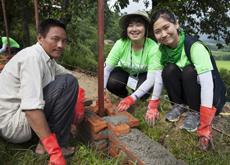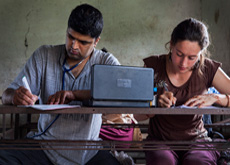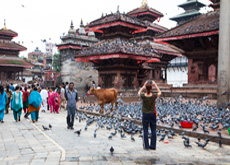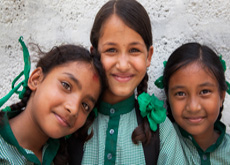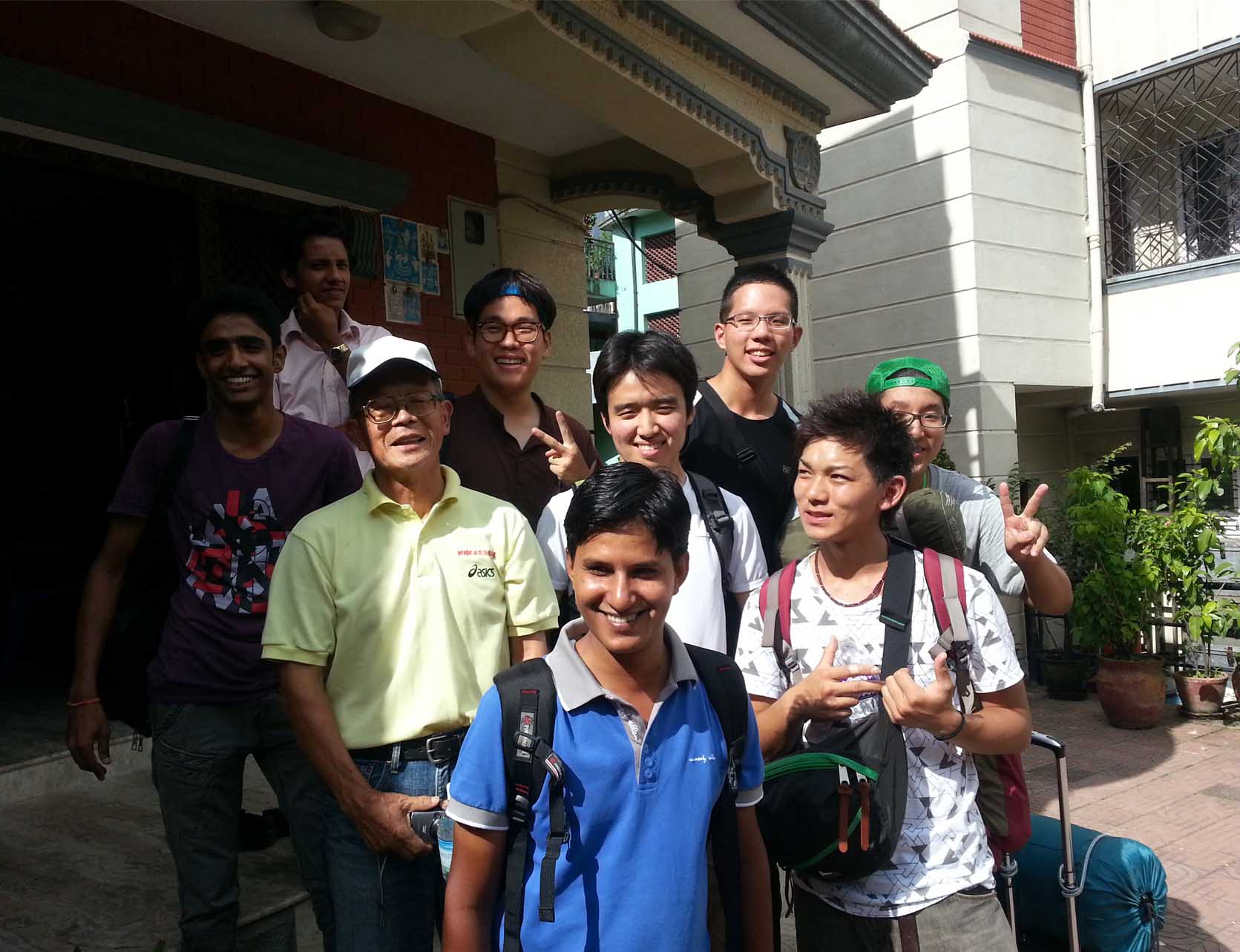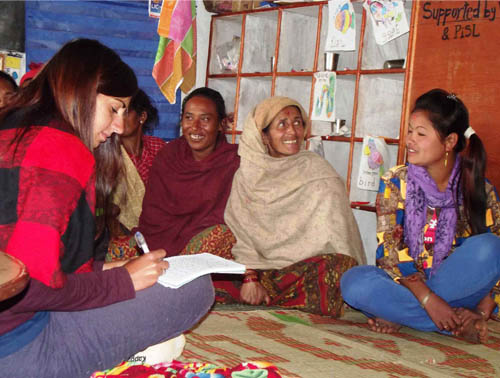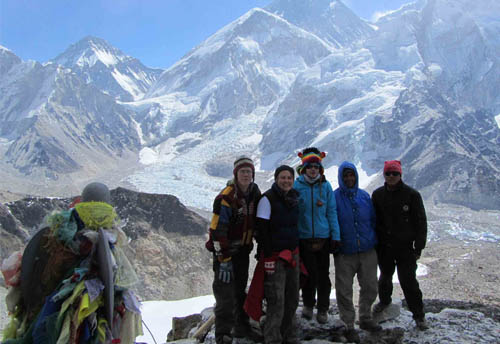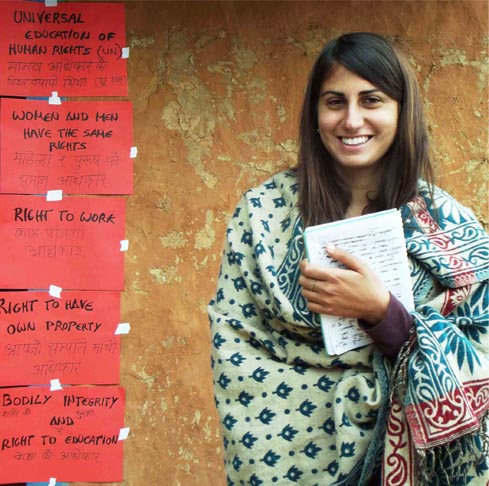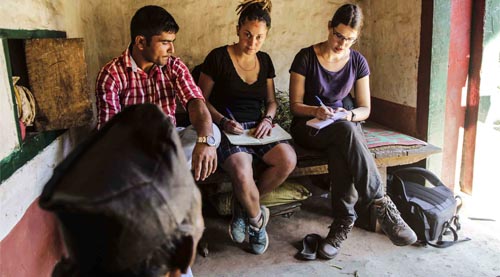How to choose right volunteering organization
If you’re reading this page, you are probably giving some thought to applying for a volunteer or intern role overseas. And, as you have probably noticed, there is a raft of organisations across the globe offering you increasingly diverse ways to donate your time and skills where help is needed.
At once this prospect can be exciting and overwhelming. With the wealth of options out there, how can you chose? How can you tell whether the organisation and program are right for you?
Before you begin to ask questions to individual organisations concerning their ethics, affiliations and costs, you must begin by asking some questions to yourself, starting with that big one: what do you want?
This can be broken up into several different areas:
Time. Possibly the most crucial consideration. We all have restrictions on our time, be those academic, professional or domestic. The first thing you need to establish is how much time you have to give. Be realistic and remember that you will be in a foreign country and will want time to explore. You might even want to consider combining your volunteer placement with travel and tourism (link) if your schedule is particularly tight.
Location. It may seem obvious, but ask yourself, where you want to be? That can be the country you are looking to give your time in or the smaller stuff, such as whether you want to work in a primitive rural environment or perhaps a more developed area, where there are likely to be more modern comforts.
Skills. You might have a skill (medical, construction, technological) that will greatly benefit others. You might be looking for an internship to help you on the path to your future career or a volunteer placement that is a complete departure from your day job. The diversity of opportunities available is phenomenal, only it pays to be clear about your objectives when you begin to search for the right opportunity for you.
Program: Remember, completing a volunteer placement or an internship is an opportunity you will want to make the absolute best out of; but they are all different. They run from the short to the long term, some will have specific outcomes, others may be more interminable. Some programs will be in their developmental stages, others may be more established. Some will be rely entirely on the help of volunteers, while others may be supported by paid staff members. Give some thought to the type of program that you wish to work with and what will motivate you most.
Organisation: Every volunteer organisation is different. Some organisations will be global with a complex infrastructure, some may be national agents, placing volunteers in foreign countries and others will be ‘grass roots’ organisations, based in the country where you will eventually volunteer. These organisations will have different structures and values. They will also offer varying levels of support to their volunteers and interns and will charge significantly different fees for the experiences they provide. Similarly, organisations may have faith or secular affiliation. It is important that you understand these differences and how they align with your own values and beliefs.
So, you have finished the interrogation and now it is time to get more information about the organisations and the programs that interest you. The following list of questions might be helpful:
- Is the organisation non-governmental and non-profit?
- What are the values and beliefs of the organisation? Are they influenced by faith or secular concerns?
- The volunteer organisation will in most cases charge a fee for the volunteer placement. Can they clearly demonstrate how volunteer fees are spent?
- Can the organisation provide evidence of results of the work undertaken in their programs? Are development and improvement evidenced?
- Is there a role description for the placement that interests you?
- Can the organisation confirm exactly what support is provided to the volunteer, such as transport, guidance with visas, staff support during the placement?
- Can the volunteer organisation put you in touch with other volunteers who have taken part in their programs?
Most of all, you must assure yourself that your objectives and values are aligned to those of the organisation you are hoping to work with
Before you embark on a placement with VIN we are happy to provide all the information you require to make an informed decision. We hope you are able to find a lot of information on our website, but we are always here to help if you have any further questions and we have a large community of past-volunteers who are more than happy to share their experiences with you (link?).
Volunteer & Internship Programs
Travel and Adventure,VINAdventure & Volunteer Program
child alt textChildren Development Program
enviroment conservationEnvironment & Conservation Program
Journalism ProjectsJournalism Program
administration,VINManagement & Administration Program
Public Health Projects,VINpublic health program
Public Interest ProjectsPublic Interest Program
vounteer programTeaching Program
Women Empowerment ProjectsWomen Empowerment Program
Youth EmpowermentYouth Empowerment Program
What sort of volunteer work is possible?
There are a number of volunteer opportunities available either within the community; at a monastery or nunnery; or assisting at the VIN office, each type of placement offers a unique and rewarding experience.
Community Based Projects:
The main community based projects are Women’s Empowerment (including Women’s Education; Income Generation; Savings and Credits; and Health, Sanitation and the Environment); Children’s Development (including Early Childhood Development; Flexible Schooling for conflict victims and support for Orphanages); Youth Development (including a youth club and language development class); Teacher Development (including workshops, seminars and exchange visits and teaching English) and the Health Program.
There are also opportunities for Construction and Manual work in the Community, and for Agro forestry projects.
Monastery and Nunnery Placements:
VIN works with many monasteries and nunneries in the Kathmandu valley, to place volunteers to teach English, life skills and creative activities.
Office Based Placements:
VIN also welcomes volunteers with the following expertise to help assist in the VIN office: Grant Writing; Fundraising; Website Design and Administration skills.
There are also opportunities for Home Stay Programs; Cultural Exchanges, and Volunteer and Trekking programs.
Your placement will be tailored according to your individual needs and interests.
Do you have any information about Nepal?
Nepal is a geographically and ethnically diverse country located in South Asia, bordering Tibet to the north and India to the south, east and west.
Throughout most of its history Nepal has been a monarchy, but it is now officially a federal democratic republic since the end of the decade long Maoist revolution. The capital city is Kathmandu, and there are 14 zones, 75 districts, 3914 Village Development Committees and 58 Municipalities. The population of Nepal is approximately 30 million.
Nepal is predominantly Hindu, but the minority faith of Buddhism is linked historically to the country, as it is the birth place of Siddhartha Gautama who, as the Buddha Gautama, gave birth to the Buddhist tradition.
Although only 147,181 square kilometers, Nepal’s landscape encompasses the mountainous north (including eight of the world’s ten highest mountains, including the highest, Mount Everest), to the flat Terai plains in the south, with an altitude range from near sea level to 8,850 meters above sea level. This huge altitudinal variation results in an incredible variety of ecosystems and a dazzling array of wildlife and vegetation.
As well as the amazing geographical and wildlife diversity, Nepal also hosts an amazing ethnic and cultural diversity.
However, it is also one of the poorest and least developed countries in the world. An estimated 30% of Nepalis live below the poverty line – some 82% of Nepalis live on less than US$2 per day.
Nepal is a mostly rural nation with 85% of people living in the countryside. It is in these rural communities that development issues such as poor education, health and sanitation are most acutely felt. Gender and social inequality are also part of daily life here too.
For more information on Nepal, there are plenty of informative guide books, such as the Lonely Planet’s Guide to Nepal and the Rough Guide to Nepal.
What is Volunteers Initiative Nepal (VIN)?
VIN is a not-for-profit, non-governmental organization (NGO) which was founded in 2005 by a diverse group drawn from development workers, educationalists, social activists and other professionals.
Unlike many other development NGOs, VIN serves to directly put efforts for change in the hands of local people. It actively encourages people to volunteer within their communities, aiming to unite all sectors of society in working together to set up and run local projects.
VIN has a board of advisors and a board of directors, of whom Bhupendra Ghimire is the Chief Executive Director. VIN also works in partnership with like-minded national and international governmental and non-governmental organizations.
VIN is officially registered under the Society Act with the District Administration Office Kathmandu (Reg No. 147/062/63), and is also affiliated to the Social Welfare Council Nepal (SWC) (Affiliation No. 20910).
Do I have to be from a specific country to volunteer?
No, you can volunteer with Volunteers Initiative Nepal (VIN) from any part of the world.
What age do I have to be to volunteer?
You must be at least 18 years old to volunteer; there is no upper age limit. Volunteers should be in good health however.
Do you provide any financial support?
Unfortunately we are not in a position to offer any financial support. Our programs operate through the kind support and cooperation of our volunteers and donors. You should find the funds to support your volunteer program.
What vaccinations will I need?
Although you do not officially require any immunisations for entry into Nepal, you should seek medical advice from your doctor or an international travel clinic before travelling, to see which vaccinations are recommended and check if your prior vaccinations are still up-to-date.
As a guide only, the following vaccinations should be considered for Nepal:
Diphtheria and Tetanus
Hepatitis A
Hepatitis B
Japanese B Encephalitis (risk dependent on time of year and location)
Polio
Rabies
Tetanus
Typhoid
You should plan your vaccinations in advance, as many require more than one injection.
Please note that if you are entering Nepal from an area infected with yellow fever, you are required to be vaccinated before entering the country.
You should bring a small first aid kit with you, and if you are taking any medication we suggest you bring a full supply from your home country, along with the prescription.
Pharmacies are available for over-the-counter medications such as pain relievers, cough syrup etc.
Do I need to speak English to Volunteer?
Yes, it is important that you speak English, even if English is not your first language.
When you arrive in Nepal you will be provided with an intensive language course on basic Nepali phrases that you may need while volunteering here.
When should I arrive in Nepal and what induction will I receive from VIN?
VIN group volunteer inductions and training begin on the 1st and/or 15th of each month, so you need arrive in Kathmandu at least one day prior to your induction start date.
You may wish to arrive earlier to allow yourself adequate time to settle in before commencing training. If however your itinerary does not fit in with starting the VIN induction on the 1st or 15th of the month, then please contact VIN, and we will try to accommodate your request.
Nepal only has one international airport in Kathmandu, so all international flights arrive and depart from here. A member of the VIN staff will pick you up from the airport (at no cost to yourself).
Depending on your volunteer program and how long you are volunteering for, the training can vary in length from just a few days up to two weeks. Typically it is divided into two parts, the first of which is based in Kathmandu and the second part is based at your volunteer program site.
If your volunteer program includes teaching, you will be given an intensive English as a Foreign Language (EFL) class, focusing on child friendly teaching approaches.
Your VIN induction and training include the following within your volunteer fees:
Guest house accommodation and lunch at VIN's office for the duration of your program induction (this is booked, arranged and pre-paid by VIN on your behalf)
A half day sightseeing tour to the main cultural sites in Kathmandu
Nepali language classes
Culture and health advice
Program Orientation
Training if required (e.g. TEFL tips).
Stationery during induction / training
Transfer to host family / placement
Support from VIN staff
Any additional expenses incurred during the induction and training period, will be your responsibility.
If required, additional training will be provided at the site of your volunteer placement.
Do you have any ideas for fundraising for my volunteer experience?
VIN will be happy to e-mail you a detailed list of fundraising ideas upon request.
What are the living arrangements when volunteering?
Your living accommodation during the duration of your volunteer placement is arranged by VIN, and is included within your volunteer program fee. During your volunteer induction / training, you will stay in a guest house in Kathmandu, and thereafter you will be placed in accommodation either in the community (with a host family); at an orphanage or at a Monastery or Nunnery depending on your selected volunteer program.
For volunteers who arrive earlier or who want to stay longer, it is not possible for VIN to arrange and provide accommodation, but we will help volunteers to find a reputable, inexpensive place to stay.
Please be prepared that your accommodation will be of a Nepali standard, and will not have the same facilities and utilities as you may be used to, such as a western style toilet or a hot shower. Although your accommodation will be basic, it will be clean.
Do I need travel and medical insurance?
As with any overseas travel, insurance is highly recommended and comprehensive travel and medical insurance should be obtained before traveling to Nepal. Check on line to see what offers are available or talk to your travel agent.
Make sure that you check the details of your policy and check for exclusions to ensure your policy adequately covers you for any activities you plan to undertake. Please note, if you are intending to travel at altitude in Nepal, please check that your insurance policy provides cover. Many policies do not provide cover over 2,500 metres.
You are advised to take out full insurance cover for medical treatment, accidents and evacuation by helicopter. It is also a good idea to have cover for unexpected losses such as cancelled flights, stolen or lost cash, cards, passport, luggage and any loss damage or liability resulting from terrorist action.
You are responsible for your arranging your own travel and health insurance, and VIN cannot take responsibility for the financial compensation for the any loss or theft of possessions or medical assistance required, during your volunteer placement.
Are there additional expenses once I arrive?
Irrespective of which volunteer program you have chosen, you will need extra spending money during your time in Nepal. The volunteer program fee will cover accommodation and two main meals per day, during the period of your volunteer placement. Your accommodation will always be located in the vicinity of your program placement, so there should be no additional work related travel expenses, and if there are VIN will cover these.
All other expenses during your volunteer placement at VIN are your responsibility. These may include buying bottled water and extra food items; socializing with other volunteers and friends in your spare time; shopping for personal items and gifts.
The departure tax is now included in the price of the flight tickets for both international and domestic connections, there is no need to pay it at the airport.
Please note that your airfare; travel and health insurance and visa costs are not covered in the volunteer program fee, and are your responsibility.
If you arrive early, intend to stay in Nepal after your volunteer placement, or wish to visit places during your days off, then you will need to have sufficient money to cover this.
You can change all major currencies. However, travelers cheques can’t be accepted by Nepali banks, and there are numerous ATM machines in Kathmandu where you can withdraw cash in NPR.
How safe is it to volunteer in Nepal?
VIN does its utmost to ensure your safety during your volunteer placement in Nepal, and to make sure you are placed in a safe environment while volunteering.
Attacks against tourists are extremely rare.
Politically Nepal is continuing to undergo a period of change, and in light of this you should avoid large gatherings and demonstrations. Bandhas (shutdowns), rallies and demonstrations can cause widespread disruption as they are often called at short notice, and disrupt transport. However, in general VIN volunteers are not impacted by these types of demonstrations, as their site of volunteering is in close proximity to their accommodation.
If you plan to go trekking during your stay in Nepal you are advised to use reputable trekking agencies, to keep to established routes, and to always walk in groups. Trekking alone is not recommended.
VIN can recommend a reputable trekking agency to volunteers.
Volunteers should also avoid travel on overnight buses in Nepal.
Lastly you should not become involved with drugs. Being found in possession of even very small quantities of drugs can lead to imprisonment.
How many volunteers are there on a site at the same time?
This varies throughout the year, and is dependant on how many volunteers there are at any one time. Usually there are between 3 and 10 international volunteers at each induction. Where possible, you are placed with one other person in the local village when you are volunteering.
What resources are available for teaching while I am volunteering? Do I need to bring my own?
If you have resources that you think may be appropriate, please discuss this with us via email prior to coming to Nepal, to see if you should bring them. Most likely anything you have will be of help, as resources here are limited.
How would my family members be accommodated while volunteering?
Your volunteer fee only covers the cost of food and accommodation for yourself, during your volunteer placement. You will be responsible for paying any additional costs for accommodating your family members in Nepal. Some volunteer placements may not have additional housing available, so you should discuss your requirements with VIN before confirming your placement.
How can I get in contact with previous volunteers?
You can find feedback from former volunteers on the VIN website, or you can contact us directly to get the email addresses of previous volunteers who have worked with us.
Who organizes my flights?
You are responsible for organizing and paying for your flights / travel to and from Nepal.
Who organizes the visa for my volunteer placement and what are the visa requirements?
You are responsible for arranging your own visa for Nepal. All foreigners, except Indians, must have a visa to enter the country. Visitors to Nepal are allowed to stay on a tourist visa for up to a maximum of 150 days (five months) per calendar year (January to December). Please note that international volunteers who arrive in August can work up to ten consecutive months, split across two calendar years (i.e. August to May). Non-tourist visas are very difficult to obtain.
You can obtain a multiple entry tourist visa from the Nepalese Embassy in your home country or a single entry visa upon arrival at Kathmandu’s Tribhuvan International Airport or at road borders (you will be asked to fill in an application form and provide a passport photograph).
We recommend that you obtain your visa in your home country, as it saves time and you can avoid the long (sometimes very long) queues at the airport.
If you stay longer than the duration of your initial visa, you will need to obtain a visa extension at the Immigration office in Kathmandu or Pokhara.
Please note that your passport needs to have at least six months validity.
Non-tourist visas are very difficult to obtain. Online VISA application in grogress?
To find your Nepalese Embassy abroad, please go to
How can I communicate with my family back home?
Email and Internet access is widely available in Kathmandu and the larger towns in Nepal, and currently costs approximately 100NPR per hour. There is also access in smaller towns, but this may be more limited, slower and expensive.
It is also easy to make international calls, either at one of the numerous private call centers or via an internet phone, which is the cheapest option.
The easiest way for volunteers to receive important post / packages from friends and family abroad is to use the VIN postal address in Kathmandu, and you can then pick up your mail from our office.
What are the school hours?
In Nepal, schools run from Sunday to Friday, 10am to 4pm (although times may differ slightly depending on location and season), and volunteers typically have Friday afternoon and Saturday off work, in addition to local festivals and holidays.
Your teaching load will vary depending on the specific school, and volunteers should discuss their anticipated workload with the headmaster / principle of the school at the beginning of their placement. On average volunteers teach for 4-6 hours per day.
What is the climate like and what clothes should I bring?
Nepal has a typical monsoonal climate, with a dry season from October to May and a wet season from June to September. The main monsoon is from mid-June to September, and the very best times to visit are Autumn (September to November) and Spring (March to May).
Kathmandu is not as cold as many people think. Even in the winter months (December to February) the day time temperature in the sunshine can reach a pleasant 20 degrees, but night-times can fall to near freezing. In the summer the temperatures in Kathmandu climb to 30 degrees and above.
Obviously climate charts and temperature extremes differ across the country and temperatures are much colder in the north, and warmer in the south.
If you are volunteering in the winter, please bring warm clothing (think layers), and cool, summer clothing is suitable for the remainder of the year. If you are here during the monsoon, please bring a waterproof jacket and an umbrella.
If you are planning to go trekking, it is possible to hire cold weather clothing, such as down jackets etc.
We advise female volunteers not to wear sleeveless tops, shorts, or short skirts in villages. Although Kathmandu is becoming more progressive and attitudes are shifting, most Nepalese people dress modestly and cover their bodies.
More about the weather: Nepal has Four Climatic Seasons:
Spring (between March – May): The temperature is mildly warm in low lands while moderate in higher altitudes with plenty of opportunities to have tryst with the mountain views. It is also the time for flowers to blossom and the national flower of Nepal – rhododendron sweeps the ascending altitudes with its magnanimous color and beauty.
Summer (between June – August): This is also the monsoon season in Nepal. The weather is hot and wet at times. It rains almost everyday with occasional thunderstorms in the evening. The rain spreads the pleasantness around with lush green vegetation.
Autumn (between September – November): This is the best tourist season in Nepal with the summer gone by and the winter to set in. The weather is highly pleasant so are the mountain views. This is the peak season for trekking as mountain views are guaranteed so better book your flight in advance. This is also the season of festivities as Nepal celebrates the biggest Hindu festivals Dashain followed by Tihar.
Winter (between December – February): The weather is cool and the sky is clear with occasional snowfalls at higher elevations. This season is good for trekking in lower elevations. The morning and night is cold and the days are warm when sunny.
Temperature & Rainfall
Nepal is the country of extremes. The low-land plains of the Terai can have tropical temperatures and also the mosquitoes. The Himalayas can get to sub-zero temperatures, but the sun blaze can bring some warmth during the day, even in the mountains. The temperature of Kathmandu goes below 1 Degree Celsius (34 Degree Fahrenheit) in winter and rises to an average of 25 Degree Celsius (77 Degree Fahrenheit) in summer.
The average temperature in Kathmandu during the four seasons:
1) Spring season ranges between 16-23 Degree Celsius (61-73 Degree Fahrenheit)
2) Summer season ranges between 23-25 Degree Celsius (73-77 Degree Fahrenheit)
3) Autumn season ranges between 15-24 Degree Celsius (59-75 Degree Fahrenheit)
4) Winter season ranges between 9-12 Degree Celsius (48-54 Degree Fahrenheit)
During the rainy monsoon season between June to August, it rains to an average between 200-375 millimeters in Kathmandu. There is occasional rainfall during the other seasons too. In an average, 1300 millimeters of rain falls in Kathmandu every year.
What should I bring to Nepal for myself?
This will vary depending on the time of year in which you visit Nepal and what additional activities you intend to participate in during your stay in Nepal.
With the exception of some medicines and high-tech trekking gear, you can buy everything that you would need for your placement in Kathmandu (and it is likely to be cheaper than in your home country). Here are a few suggestions on what to bring:
Recommended:
Basic First Aid Kit
A full supply of any medication which you require for the duration of your stay, along with the prescription.
If you wear contact lenses - spare lenses and enough solution
Torch / Flashlight (a head torch is especially useful during power cuts)
Sleeping Bag / sleeping bag liner (depending on season)
Hiking boots
Flip flops
Waterproof jacket (a lightweight fold-away jacket is fine)
Fleece jacket (during winter months)
Light-weight cotton clothing
Mosquito repellent
Sun cream
Sunglasses
Water purification tablets and/or high quality water purifier
Face mask (depending on the time of year, Kathmandu can become very polluted and dusty).
Passport photos (you’ll need these for trekking permits, buying a SIM card and for your VIN volunteer card)
Optional:
Photos of your family / friends / home
Souvenirs from your country for your host family etc
A few examples of your local currency
Basic Learner's English/Nepali dictionary
Coloured pencils and pens, drawing books, stickers
Books on teaching English/English Grammar for your reference
It is also a good idea to bring with you a photocopy of your passport and visa, and keep this in a separate location to the original documents. If possible you should also e-mail yourself a scanned copy of important documents before departing for Nepal, as this will facilitate things in the event of loss or theft of the original documents.
If you wish to get a Nepali SIM card for use during your stay in Nepal, then you can bring an unlocked mobile with you from your home country.
What should I bring for my host family?
The Nepali people are very friendly and generous, and giving gifts to volunteers on their day of their departure is common. If you would like to bring gifts from your home country for your host family, below are some suggestions (but this is not compulsory):
A small photo album with pictures of you and your family/friends from home
A 'coffee table' book of your home town or country
Posters, stickers or magazine pictures from your country
Children's books from your home country
T-shirts (new) from your country
Flags
Alternatively many volunteers choose to take and print photos of their host family as a gift at the end of their stay.
Is there anything I can bring with me that would be useful to your organization?
We would be very grateful for educational resources such as books on grammar, TEFL, science, health, illustrated books, flashcards and children's books. Donations of clothes and stationery are also very much appreciated.
In addition, if volunteers have any old laptops/ digital cameras/ mobile phones which they no longer require, VIN would really appreciate these and can put them to very good use.
How can I prepare for teaching English prior to my arrival?
You will be provided basic TEFL instruction during your training period but if you are inexperienced you will find it worthwhile to do some preparation prior to your volunteering. It would be helpful to brush up on your grammatical knowledge of English and to bring some English language/TEFL books to refer to as they are very difficult to find in Nepal. Amazon.com has a good selection (with reviews) if you need some ideas, or you are welcome to contact us.
What Makes a Good Volunteer?
It is not essential for volunteers to have formal qualifications, but we do ask that all volunteers have a genuine desire to help people, and a commitment to seeing work through to completion. A positive and flexible attitude will also help you to get the most out of your volunteer work.
If you are applying to teach English or train teachers, a strong command of the English language is a necessity. Similarly, if you are interested in volunteering at the Health Post, prior medical experience is needed. For some specific programs such as teaching computer skills, environmental awareness programme etc you should possess the skills and knowledge necessary to work within these programs.
The following attributes are essential for volunteer work, regardless of the program:
Independence
Patience
Good problem-solving skills
Sense of humour / ability to laugh at yourself
Tolerance
Willingness to share
Flexibility
Self-motivation
Open-mindedness
Enthusiasm to learn about new cultures
With regards to volunteer work in general, it is useful to come with an open mind, and be realistic in your expectations of volunteering, as it is impossible for the projects and work here to be as structured as what people are used to in the west. It helps to be flexible and adaptable in how you work, and understand some of the constraints in terms of language, resources etc.
How much volunteers contribute and the exact work they undertake can largely depend on where they feel their skills can best be utilised, and on how proactive they themselves are.
What is the current political situation in Nepal?
On the 21 November 2005 a peace agreement between the Government of Nepal and the Maoists was signed, thereby ending a decade long conflict in Nepal. Both sides agreed to a permanent ceasefire.
In 2008 a Constituent Assembly was sworn in following a democratic election and the Constituent Assembly declared Nepal a republic.
The Maoist-led coalition government took office in September 2008, but in May 2009 the Prime Minister announced his resignation, increasing political uncertainty.
A new Prime Minister was sworn in, supported by all parties except the Maoists.
- On 19 November 2013, elections were held to form a new Constituent Assembly tasked with writing the country’s constitution (something the previous assembly failed to do after it became deadlocked).
- The Nepali Congress, the country’s oldest political party, won 105 of the 240 directly elected seats. The Communist Party of Nepal (Unified Marxist-Leninist) came second and the Unified Communist Party of Nepal (Maoist) secured only 26 seats, a small fraction of the total it earned in the 2008 elections.
- The CPN (Maoist) leader is alleging voting fraud, and is threatening to withdraw from the Constituent Assembly. However, he is facing mounting pressure from both national and international quarters to accept the people’s poll and partake in the process peaceably.
How long can I volunteer for?
VIN accepts international volunteers for placements ranging from a minimum of 1 week up to a maximum of 5 months per calendar year (the maximum placement in any one calendar year is restricted by visa requirements (please refer to the Visa Requirement question)). However, please note that international volunteers who arrive in August can work up to 10 consecutive months, split across two calendar years i.e. August to May).
The longer you are able to volunteer for, the greater the impact you can make.
About Nepal
General Information
Nepal has never been colonized, and is ruled by multiparty and constitutional monarchy. There are 14 Zones, 75 districts, 3914 Village Development Committees and 58 Municipalities in the country.
Our programs are designed to help both who want to observe their holidays in Nepal and to those who intend to volunteer purely for extended period of time. Nepal is a beautiful and varied country but it is one of extremes, and volunteers may encounter this in terms of climate and physical exertion. Volunteers may have to walk for considerable lengths of time over mountainous terrain in more or less pleasant climatic conditions.
Nepal is the poorest country in Asia and Volunteers will not be living surrounded by luxuries to which they are accustomed at home. Nepalese culture is far very different from that of the Western world and will require some adaptation and flexibility on the art of Volunteers. It is the responsibility of Volunteers to inform themselves as to the nature of their undertaking and the country they are visiting by researching as widely as possible. Although VIN is more than willing to help with this information we will not be responsible for Volunteers who fail to inform themselves as to the nature of their undertaking or the country to be visited.
Historically Nepal had been a very peaceful country. In the past years there have been increasing challenges involving the activities of different armed forcesl. However, as yet there have been only isolated incidences of these groups encountering Westerners in Nepal.. Nevertheless the situation has now been different. There is 8 party alligned government and Maoists are also the part of government. They have come to the peaceful mainstreming politics. We are going to have Constituational Assebly Election on 10th April 2008. It is hoped that this will ensure people to involve writing their constitution including from all the sectors' need.
VIN assures all volunteers that it takes reasonable measures to ensure that it places volunteers in easily accessible areas in the very unlikely event that serious problems of any nature should arise. After April 28, 2006, the political scenario has been changed. The King has reinstated the parliament. It means democracy has again been restored and the rebels have also been mild to it since their demand of Constitutional Assembly has been declared. Let's hope situation goes all right. However, as VIN cannot foresee how political issues might develop, it is very strongly recommended that Volunteers obtain their own independent travel advice from their own government or embassy of Nepal.
VIN will provide the structure of the Volunteer Program but Volunteers engage themselves at their own risk. To this end, we insist that all Volunteers must have their own personal insurance policy as included in the price of the Program and which we will organize unless particular arrangements are made with individual Volunteers.
Climate in Nepal
The climate differs across Nepal's three regions from sub-tropical to freezing. Climatic conditions of Nepal vary from one place to another in accordance with the geographical features. In the north summers are cool and winters severe, while in south summers are tropical and winters are mild. Nepal has namely five major seasons: spring, summer, monsoon, autumn and winter.An average temperature drop of 6°C occurs for every 1,000 m gain in altitude. In the Terai, summer temperatures exceed 37° C and higher in some areas, winter temperatures range from 7°C to 23°C in the Terai. In mountainous regions, hills and valleys, summers are temperate while winter temperatures can plummet under sub zero. The valley of Kathmandu has a pleasant climate with average summer and winter temperatures of 19°C – 35°C and 2°C – 12°C respectively.
The Himalayas act as a barrier to the cold winds blowing from Central Asia in winter, and forms the northern boundary of the monsoon wind patterns. Eighty percent of the precipitation is received during the monsoon (June-September). Winter rains are more pronounced in the western hills. The average annual rainfall is 1,600 mm, but it varies by eco-climatic zones, such as 3,345 mm in Pokhara and below 300 mm in Mustang.An interesting fact is that there is no seasonal constraint on traveling in and through Nepal. Even in December and January, when winter is at its severest, there are compensating bright sun and brilliant views. As with most of the trekking areas in Nepal, the best time to visit are during spring and autumn. Spring is the time for rhododendrons while the clearest skies are found after the monsoon in October and November. However, Nepal can be visited the whole year round.
Here’s a brief view of the average temperatures and rainfall during peak summer and winter in three most popular tourist areas:
Place Summer (May, June, July) Winter (Dec, Jan, Feb)
Max (°C) Min (°C) Rain (mm) Max (°C) Min (°C) Rain (mm)
Kathmandu 28.1 19.5 312 19.3 3.0 15.4
Pokhara 29.7 21.3 829.7 20.3 7.7 26.3
Chitwan 33.0 25.3 404.0 24.1 8.3 13.8
Economy
Economy depends almost entirely upon agriculture; about 80% of the population derives its livelihood from farming. High population growth and deteriorating agricultural production have made it difficult for many in Nepal to meet their basic needs. The industries are based mostly on tourism, carpet, textile; jute, sugar and oilseed mills, cement and brick production.
Education
Although primary education is free in Nepal, once students reach the higher grades of primary school attendance begins to decline as children are expected to help their parents at home and in the fields.
